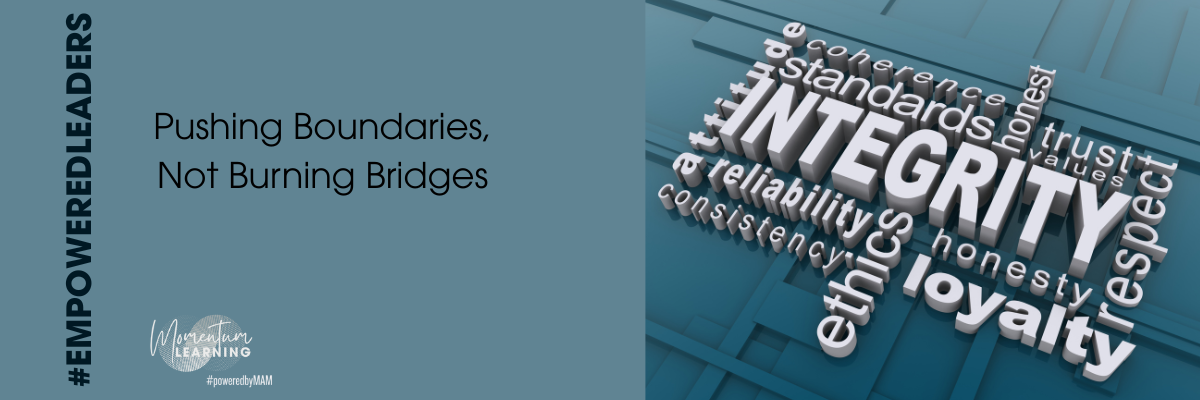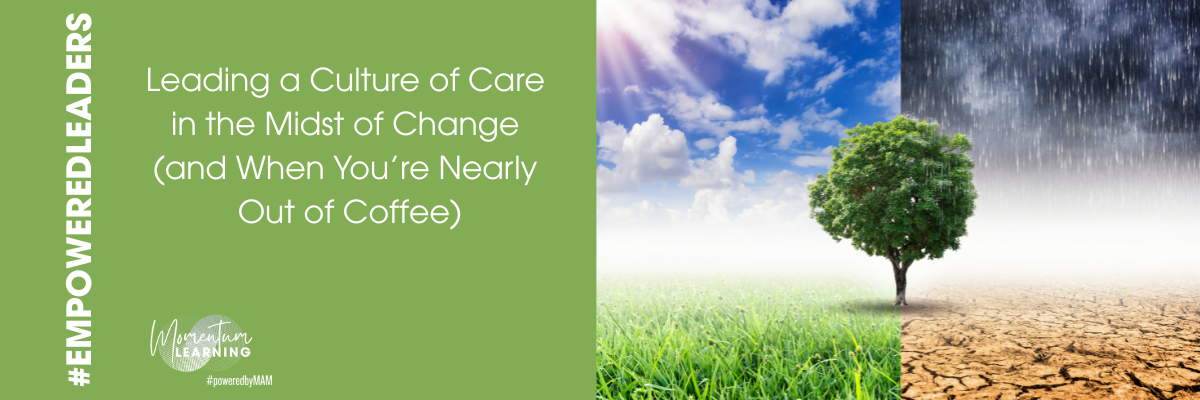
Pushing Boundaries, Not Burning Bridges
Pushing Boundaries, Not Burning Bridges
It’s one thing to disrupt.
It’s another to do it well.
The boldest leaders I know don’t throw grenades.
They ask better questions.
They challenge systems
without setting fire to the room.
Disruption without purpose is noise.
Disruption with intent? That’s leadership.
Rosabeth Moss Kanter, in her work on change leadership, offers a reminder:
“The best reformers aren’t always the loudest — they’re the most relational.”
She calls it the inside-out model.
Disruption that starts from within.
Rooted in emotional intelligence.
Anchored in empathy.
Powered by consistency, not chaos.
So before you push, pause.
Before you shake the foundations, ask:
Am I elevating others… or proving myself?
Am I anchored in kaupapa… or reacting from ego?
Have I earned the trust I’m about to spend?
Because trust is the currency of change.
Spend it wisely.
Spend it sparingly.
Spend it in service.
Change that lasts doesn’t crash through walls.
It walks alongside.
It invites.
It listens.
It lifts.
Ngā reo māhaki: the quiet voices often carry the most weight.
Leadership that transforms?
It doesn’t shout.
It shows up.
It stays steady.
It holds the kaupapa with care.
A Question to Sit With:
Where could you lead a quiet disruption this week, one that shifts without scorching?
Go with care,
Mary‑Anne
Choosing Your Battles — The Quiet Superpower
Choosing Your Battles — The Quiet Superpower
Not every battle is worth the bruises.
Not every stand makes the statement you think it does.
The wisest leaders I know don’t rush in, sword swinging.
They pause.
They breathe.
They ask the deeper question:
“What’s really at stake here?”
Instead of reacting, they discern.
Discernment is leadership’s quiet superpower.
It doesn’t roar — it whispers.
It shows up when your ego rises… and you choose purpose instead.
When you feel the fire… but decide not to fuel it.
When silence costs you nothing — and earns you peace.
Bill George, who writes on authentic leadership, calls this anchoring to your True North — your internal compass that guides you when the winds of external pressure are strong.
His research shows that leaders who know their True North:
✔ Make better long-term decisions
✔ Build deeper trust
✔ Stay grounded in values, not emotion
They don’t lead to win arguments.
They lead to uphold integrity.
So ask yourself:
Is this the issue where I need to stand firm?
Or is this the one where restraint is the wiser move?
Will this cost more than it will create?
Am I choosing pride… or purpose?
💬 If the issue is about safety, equity, or integrity — hold.
💬 But if the gain is small and the cost is high — step back.
💬 Courage isn’t just in the pushing — it’s in the knowing when not to.
You don’t need to show up to every battle.
You need to show up where it matters most.
Something to Sit With:
Where are you spending energy that might be better invested elsewhere?
Go with courage,
Mary‑Anne
Reading the Room (and the Role) in a New Leadership Space
Reading the Room (and the Role) in a New Leadership Space
It’s tempting to jump in fast.
To prove yourself.
To speak with certainty.
To take action.
To fill the space.
But leadership — especially in new terrain — isn’t always about showing what you know.
It’s about learning what matters.
Who speaks?
Who holds the silences?
Where do decisions really land — and where do they drift?
Take a breath.
Observe before you act.
Because wisdom lives in the noticing.
Leadership scholar Herminia Ibarra reminds us:
“You can’t think your way into a new way of acting — you must act your way into a new way of thinking.”
She calls this outsight — a reframe that says leadership identity is shaped not only by self-reflection, but by trying new things.
By stepping into new roles.
By testing different rhythms.
By observing what lands and what floats past.
The early days aren’t about proving who you are.
They’re about tuning in to who you’re becoming.
So... slow down.
Study the ecosystem.
Track the undercurrents.
Watch the micro-moments.
Get curious about the rhythms.
Ask early, thoughtful questions:
“What would a great first three months look like — from your perspective?”
Notice what creates momentum — and what quietly drains it.
The real leadership work happens in the between:
In the hallway chat.
The shared coffee.
The way you enter a room.
Even if you’re new, your presence is already shaping the space.
So ask yourself — not just what you’re doing…
but who you’re becoming as you do it.
Pause + Reflect:
What relationship, rhythm, or pattern could you observe more closely this week — to lead more wisely?
Stay steady,
Mary‑Anne
Leading a Culture of Care in the Midst of Change (and When You’re Nearly Out of Coffee)
Let’s be real — some days feel like you’re spinning 12 plates, managing the caffeine supply, and holding space for everyone else. The pace is unrelenting. The pressure is real. And more and more, I’m hearing the same quiet truth: people are tired.
So you do what you’ve always done. You step in.
You remember the birthdays, notice when someone’s off, check in after a tough meeting, send the thoughtful text. You carry care — because people matter. Because connection matters.
But what happens when it starts to feel one-sided?
When you’re holding all the care… and it’s not being returned?
That’s real. And it’s quietly exhausting.
Care can’t be sustained if it only flows one way. Culture can’t be held together by just one or two kind-hearted humans doing the heavy emotional lifting. A strong culture is co-created. And when the load consistently falls on a few, it doesn’t empower — it erodes.
And here's the thing — your brain’s working hard in the background just to keep you functioning. As Psychology Today explains, our brains treat every change — even the small ones — as a potential threat. It's a built-in survival response. So when you layer emotional labour on top of ongoing change and uncertainty, your brain moves into protection mode. That means less capacity for creativity, care, and connection — and more fatigue, frustration, and fog (Stulberg, 2024).
No wonder so many are quietly cracking.
In Aotearoa, research shows that around 11% of people in caring or leadership roles meet the threshold for burnout (Carey & Naquin, 2024). And it’s not just workload — it’s the emotional load. The constant attunement to others. The quiet hope that someone will check in on you, too.
And as Dr. Michelle McQuaid gently reminds us:
“You can’t create a well workplace if your well-being is always at the bottom of your to-do list.”
So here’s your quiet reminder — maybe the one you didn’t know you needed:
You matter too.
Your energy. Your mauri. Your boundaries.
And sometimes, the most courageous thing you can do isn’t doing more — it’s gently inviting others to step in:
“I’ve been wondering how we each support the emotional load in this space — what have you noticed?”
“What might it look like if care was something we all contributed to, in ways that worked for us?”
And sometimes, it’s about stepping back just enough to make room.
Room for reciprocity.
Room for shared rhythm.
Room for others to carry care too — not as a burden, but as a shared value.
Because culture doesn’t shift through over-functioning. It grows through kōrero, invitation, and collective ownership — especially when things are hard.
Re-grounding Prompt:
Where might you be overextending — and what gentle pause, boundary, or ask could help restore balance this week?
With care,
Mary‑Anne
If You Don’t Know Where You’re Going — Leading Through Strategic Fog
If You Don’t Know Where You’re Going — Leading Through Strategic Fog
In Alice in Wonderland, when Alice asks which road to take, the Cheshire Cat replies,
“That depends a good deal on where you want to get to.”
She doesn’t know. So the Cat responds:
“Then it doesn’t much matter which way you go.”
Whimsical? Yes. But also painfully relevant for anyone leading in today's ever-changing environment. Because let’s be honest — how often are we asked to provide certainty, optimism, and direction… when the road ahead is still being drawn?
You’re navigating budget constraints, reform cycles, and shifting expectations. You’re holding the line while the path keeps moving. And at the same time, you’re expected to keep people connected and hopeful.
But leadership in times like these isn’t about knowing it all. It’s about knowing what anchors you. What you can offer - even when clarity is in short supply.
Ron Heifetz, the voice behind Adaptive Leadership, reminds us that leadership during complexity isn’t about delivering answers - it’s about creating the conditions for learning and adaptation. It’s about helping people stay connected to purpose while walking through ambiguity together.
That aligns with Michael Fullan’s take on change leadership too. He speaks often about coherence being more important than control - that people don’t need a detailed map as much as they need a shared direction, a sense that “we’re in this together,” even if the route isn’t fixed.
Simon Breakspear adds to this by encouraging “agility with intention.” It’s not enough to be flexible - we need to be flexible on purpose. As leaders, we can support change best when we create adaptive structures, reflect often, and stay close to the core kaupapa — the values and purpose that guide us when the vision gets hazy.
And in the midst of all this, James Clear, author of Atomic Habits, offers a simple truth that brings it all home:
“You do not rise to the level of your goals. You fall to the level of your systems.”
Even when the big picture is fuzzy, small, intentional habits still matter. Weekly check-ins. Honest kōrero. Shared reflection. These rhythms help steady the waka. They build trust, traction, and resilience — not through grand gestures, but through everyday consistency.
So if you find yourself in strategic fog this week, here’s your invitation:
Show up.
Name what is known.
Ask good questions.
Stay grounded in your kaupapa.
And invite your team to walk alongside you, not wait for you to figure it all out first.
You’re not being asked to be perfect. You’re being asked to be present. And that’s enough.
Something to Ponder:
What’s one thing you can clarify this week — even if the rest is still forming?
Stay steady,
Mary-Anne





